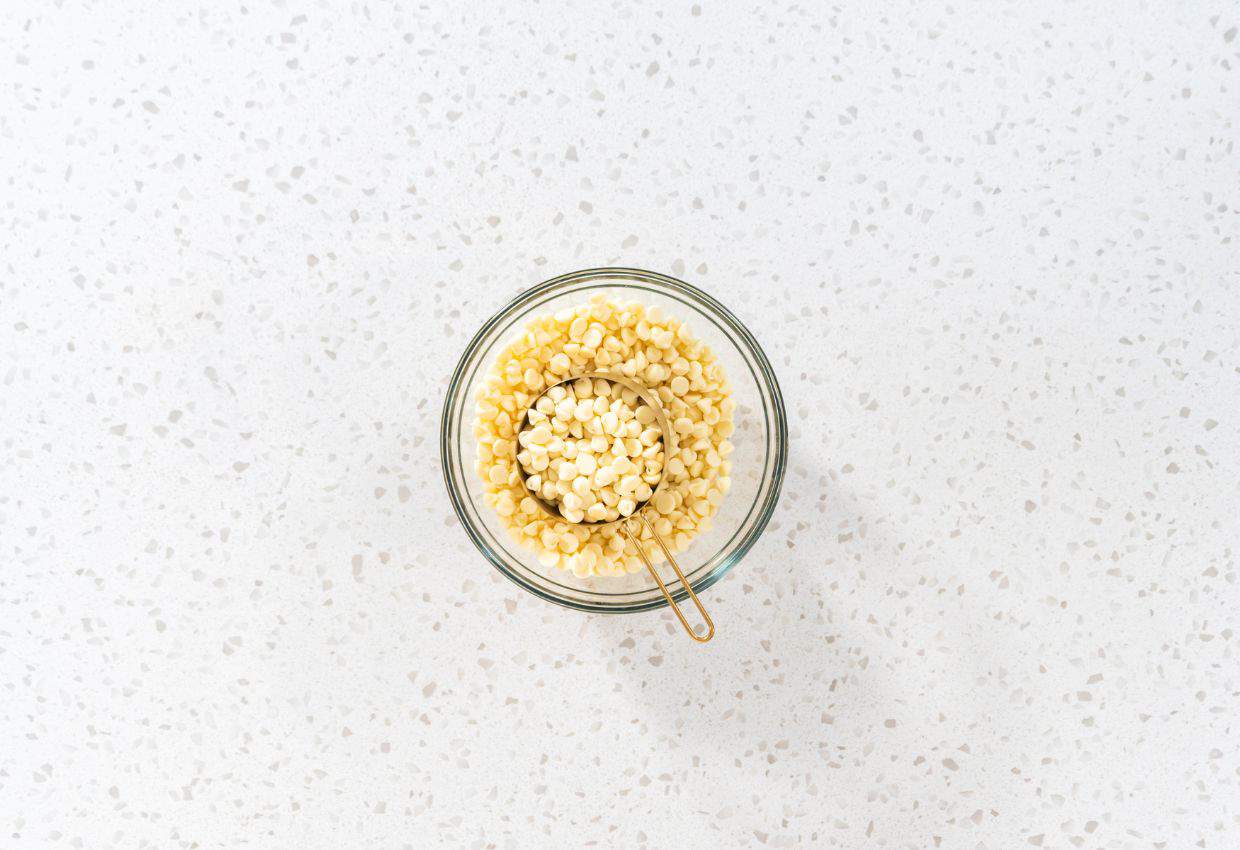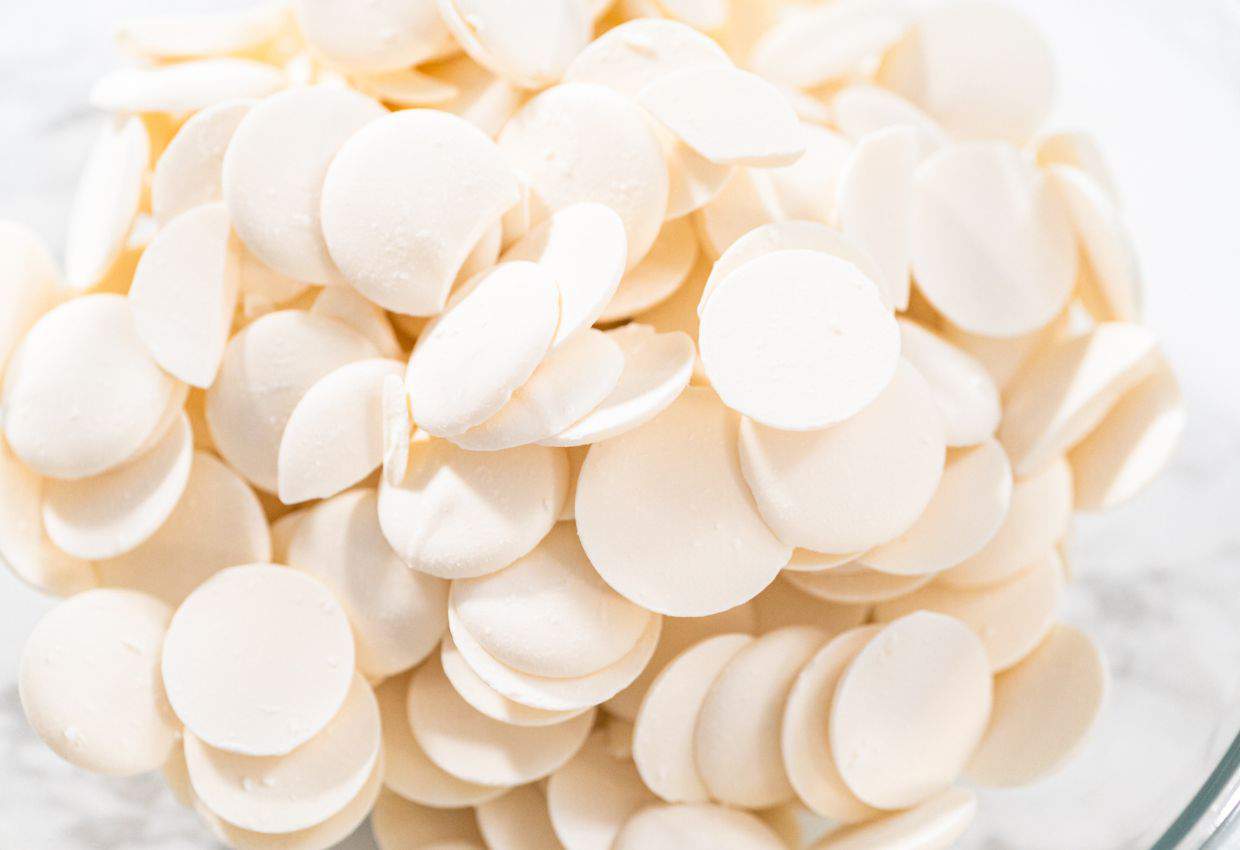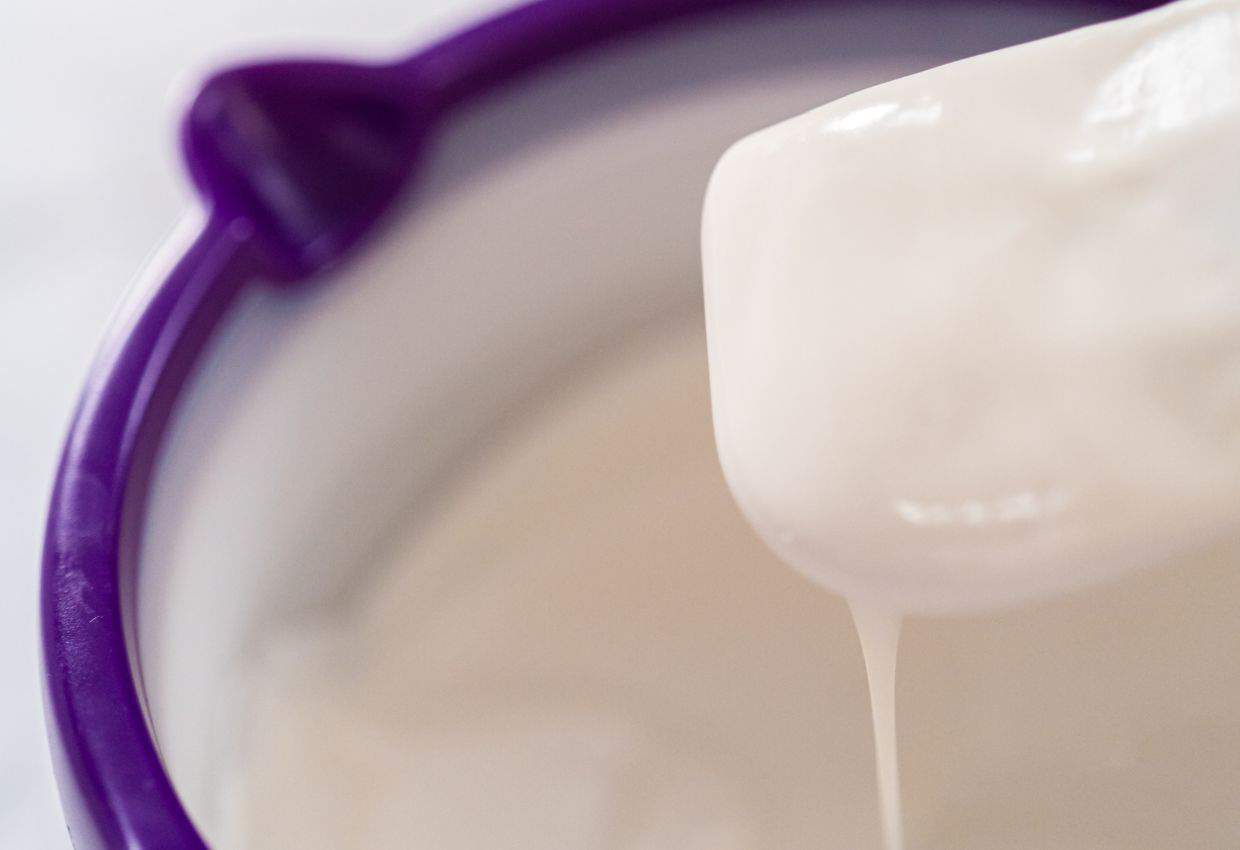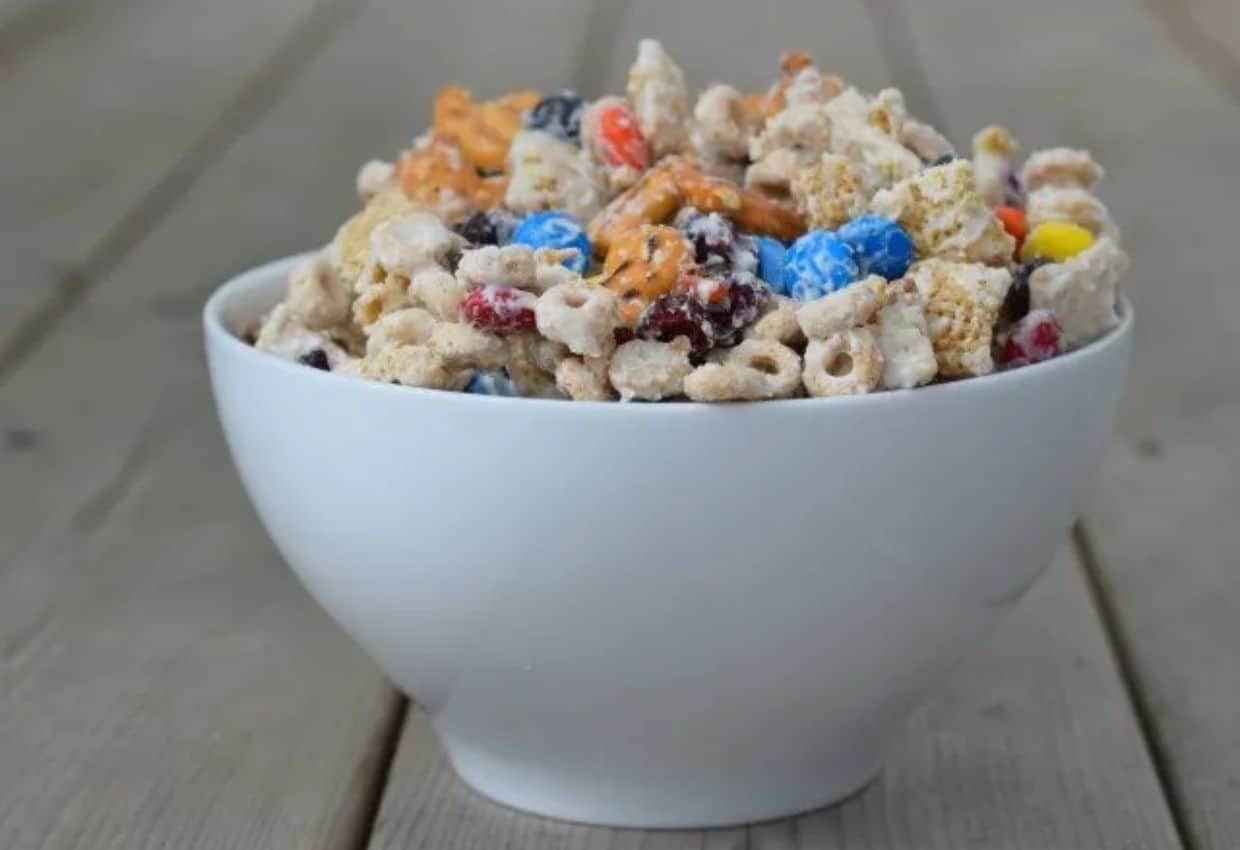White chocolate, the ivory counterpart to its darker siblings, has long danced on the periphery of the chocolate world. It’s that sweet, creamy confection you might have dismissed as not quite chocolate.
But let’s not judge it by its color or lack of cocoa solids alone. You will finally understand what white chocolate truly is — and what it isn’t. Plus, you’ll uncover some delightful ways to wield this creamy delight in your kitchen.

What is white chocolate?
At its core, white chocolate is a blend of cocoa butter, sugar and milk solids.
The primary ingredient in white chocolate is cocoa butter, extracted from cacao beans. It’s the fatty component that is responsible for that silky texture. Unlike traditional dark and milk chocolates, white chocolate contains no cocoa solids, which create the cocoa brown color you associate with chocolate.
White chocolate is known for its pronounced sweetness, thanks to its higher sugar content. Its velvety, melt-in-your-mouth texture makes it a versatile choice for both baking and snacking.
“White chocolate is my favorite of all. It tastes completely different and so much better than its dark sister. I cook with it, bake with it and especially eat as much as I can. I now make my own bars and chocolate chips from time to time as I feel it is a tiny bit healthier than what you get in stores.”
— Zuzana Paar, Lowcarb-Nocarb
Filled with appetizers, salads, sides, mains and desserts, Food Drink Life's cookbook will become your favorite!
- Easy and delicious recipes from a variety of top chefs and recipe developers.
- Bright, colorful pictures on every page.
- Printer-friendly recipes that you can download instantly to your device.
- Printable shopping list and a kitchen conversion sheet.
Is white chocolate really chocolate?
Ah, the million-dollar question. Is white chocolate a bona fide member of the chocolate family? The answer is not as straightforward as you might expect.
Some chocolate purists argue that white chocolate doesn’t deserve the chocolate title because it lacks cocoa solids, the essence of chocolate’s flavor. They claim it’s more of a candy than true chocolate.
On the flip side, proponents of white chocolate argue that it does contain cocoa butter, a primary component of all chocolates. They contend that it is a legitimate chocolate variant, albeit one with a different flavor profile.
While the debate rages on, most chocolate aficionados have come to accept white chocolate as a delightful, although definitely distinct, member of the chocolate clan. Until 2002, the FDA standards of identity required that chocolate contain chocolate liquor, which is what gives traditional chocolate the cocoa brown coloring we expect.
In 2002, however, the FDA changed its stance and created a standard of identity for white chocolate that established it officially as chocolate.
To be considered white chocolate, it must contain at least 20 percent cocoa butter, at least 14 percent total milk solids and at least 3.5 percent milkfat. It cannot consist of more than 55 percent nutritive carbohydrate sweetener.
White chocolate versus almond bark: A creamy showdown
You’ve probably heard of almond bark, and people often use almond bark interchangeably with white chocolate, but they aren’t the same. Although they share shelf space at the grocery store, make sure you know what you are getting and that you buy what you intend to.
White chocolate contains cocoa butter, milk solids and sugar. Almond bark, on the other hand, is usually made with vegetable oils, sugar and flavorings. It is meant to mimic the texture of white chocoate but generally does not include cocoa butter.

White chocolate is rich, creamy and sweet. Its flavor is sweet and buttery with a subtle
White chocolate is versatile and is used in a variety of confections, from truffles to baking. Almond bark can be used similarly, but is more often used for coating candies, pretzels and other treats.
How to use white chocolate
While you likely immediately think of using white chocolate in baking, it has many uses besides that. Of course, you should utilize white chocolate chips in cookies, brownies and the like.
“White chocolate needs some love too. It’s smooth and creamy, makes beautiful curled garnish on top of cake and an interesting twist on cookies and brownies. If at first you think it’s only chocolate’s poor imitation, think again!”
— Jessica Haggard, Primal Edge Health
In addition, you can melt white chocolate and drizzle it over cakes, cupcakes and pastries for an elegant finish. This often hides imperfections in what you have made while adding flavor.

One often overlooked use is to add grated white chocolate to your cake batters for an extra layer of richness.
Just like a traditional chcolate ganache, you can create a white chocolate version by combining melted white chocolate and heavy cream in a one-to-one ratio. Use it to glaze cakes, dip fruit or drizzle over ice cream.
Use white chocolate to make truffles, too. Simply mix white chocolate with cream, shape the semi-solid mixture into balls and roll them in cocoa powder or crushed nuts.
White chocolate makes a great coating, as well. You can dip strawberries, pretzels or marshmallows into melted white chocolate for a simple yet delightful treat. It is also the coating for a fabulous white chocolate party mix.

Use the leftover melted white chocolate to make homemade white chocolate candy bars or chocolate bark by mixing it with anything from nuts to dried fruits or even spices like cinnamon or nutmeg. Pour it into a mold or let it harden on a sheet of waxed paper for a dessert that looks far more impressive than the effort it took to make it.
You can use white chocolate in beverages, as well, as it provides a lovely complementary flavor. Try stirring white chocolate into warm milk until it melts completely to make a delicious hot chocolate. Top with whipped cream for an indulgent twist. You can also add it to coffee for a fancy at home pick-me-up.
Believe it or not, white chocolate can add a touch of sweetness to savory dishes, as well. Try it in creamy pasta sauces or as a glaze for roasted meats.
In conclusion
White chocolate may not be the dark and brooding sibling of the chocolate world, but it brings its unique charm to the table. Whether you’re a fan of its sweet, creamy goodness or still sitting on the chocolaty fence, white chocolate has carved a place for itself in the world of sweets.
Michelle Price is a food and travel writer at Honest and Truly who almost has an empty nest. She loves to provide both the inspiration and the confidence you need to help get you into the kitchen and on the road to enjoy new flavors and experiences.
